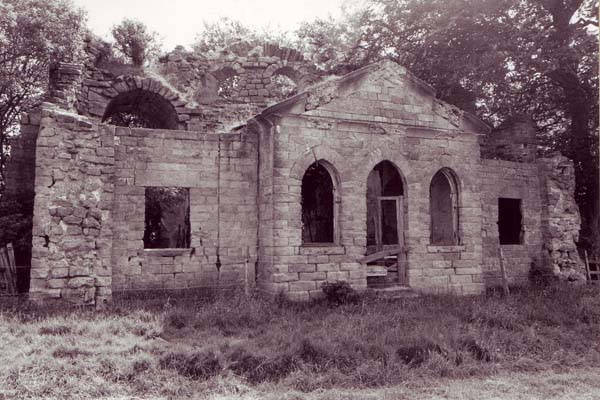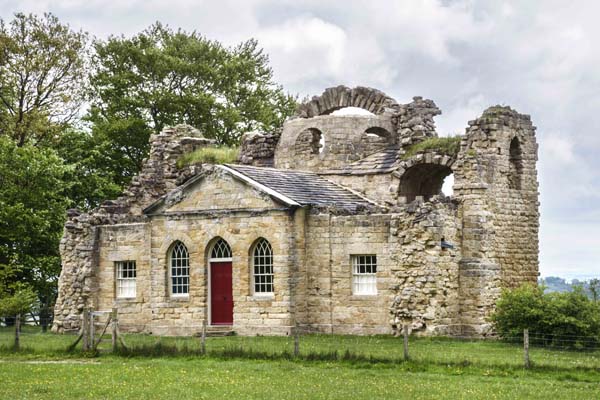With the help of our supporters, each year we take on one or two rescue projects - so saving buildings at risk of being lost forever. We are often the last hope for these precious yet crumbling structures, and our transformative restorations have removed countless structures from ‘at risk’ registers.
As someone who has now worked for the Landmark Trust for many years, I have been lucky enough to have been involved in many notable rescues of very derelict historic buildings. I’ve travelled the length and breadth of Britain in search of fragile plasterwork and fallen timbers and watched expert craftspeople breathe new life into the most special of places.
One of the great joys of working for Landmark is that each and every restoration project is done ‘properly’ in the sense that the time, attention and resources that such problem cases need, is duly given. So this, the skills of the design team and the many craftsmen & women carrying out the work, and of course, the ‘magic’ that John Evetts brings to the final furnishing, all goes to produce what we always hope is a thrilling end result.
Below are a number of Landmark projects that are particular favourites of mine, and that I have had the pleasure and privilege of being involved with. In my 25 years or so of building rescue work, it has been most satisfying to see these – and countless others - beautifully restored and given new life and purpose. While we sit through another lockdown here in Britain, I only hope our supporters can soon be travelling and enjoying holidays in heritage once again.
I first visited this building decades ago with our co-founder Lady Smith and we both agreed it would make an excellent Landmark. Many years have intervened since that first visit, filled with various pauses beyond our control and complex permissions, plans and ecology considerations. But the end result has fully justified the wait and all the hard work. A particular triumph is the restoration of the ribbed and vaulted plaster ceilings, which had all but been lost. This required craftsmanship of the highest order – which hopefully you will be able to see on your TV screens sometime soon as the Dairy’s restoration was filmed from beginning to end.
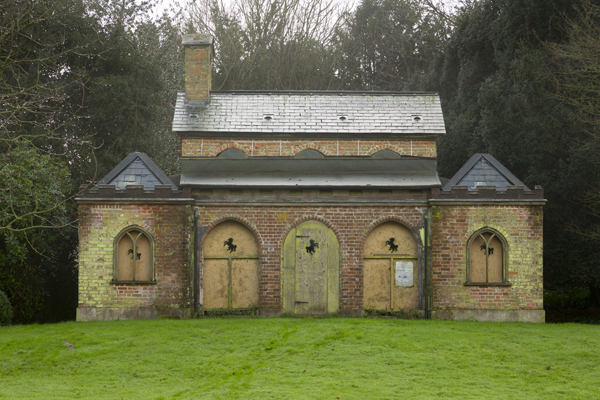
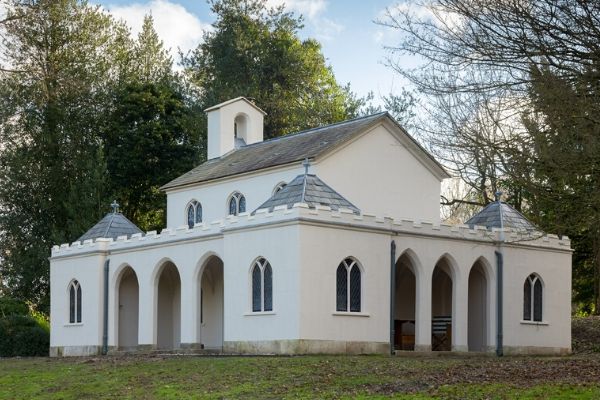
Visiting derelict buildings for most of my adult life can lead one to be, perhaps, a little blasé about the risks involved in exploring such fascinating places. But Astley Castle was a case where real caution was needed each and every occasion I visited. Having been ravaged by fire and abandoned for over 40 years, this was a building that was actively falling down, with a bit less of it each time I went.
Being so large and so derelict, a new approach was needed to saving it, and we took the bold decision to hold a design competition to create a modern, contemporary Landmark within the shattered walls. Witherford Watson Mann tell how, as they left in the lift after presenting their scheme to the judging panel, they said to each other ‘well we won’t hear any more from them’ – and so they were taken aback to be told that they had won.
It took four years of work on-site to piece together the crumbling walls, create the new Landmark, repair the encircling moat walls and mend the adjacent Gothic coach house. Len Hardy, one of Landmark’s crafts team at the time, was a star throughout and patiently worked on, often on his own and in all weathers, skilfully carrying out his craft of restoring old buildings. Its ongoing popularity has been the best endorsement of the approach we took to rescuing it.
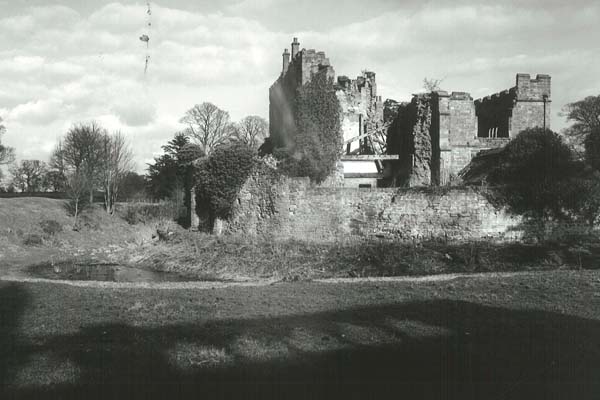
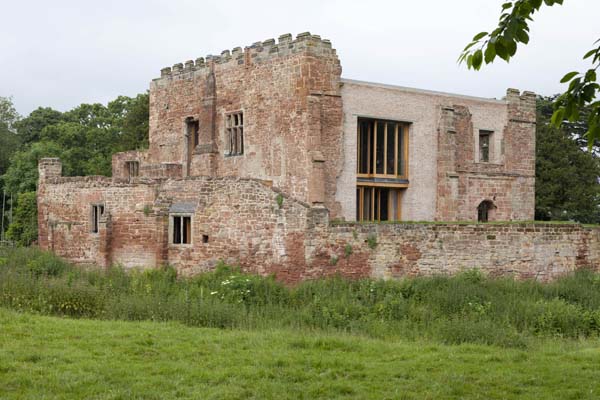
Having regularly holidayed in North Wales since the age of six, I have always had a soft spot for Welsh buildings ranging from the humble cottage to domineering castles. We were contacted by Denbighshire’s Conservation Officer not long after I joined Landmark as he felt that only Landmark would be brave (daft?) enough to take on such a derelict building. I still clearly remember my first visit there. The heavens had opened and the rest of the family left me on my own to visit this incredibly vulnerable building. It had no roof at all and large trees were growing out of what remained. But even under such leaden skies, I could see that it still had most of its original 16th-century timber windows and the splendid ‘Cyclopean’ doorhead. After much persuasion, Landmark’s Trustees finally agreed to take on what must count as one of our most notable restoration projects. The beautifully restored house sits in a delightfully secluded valley and is well worth a stay.
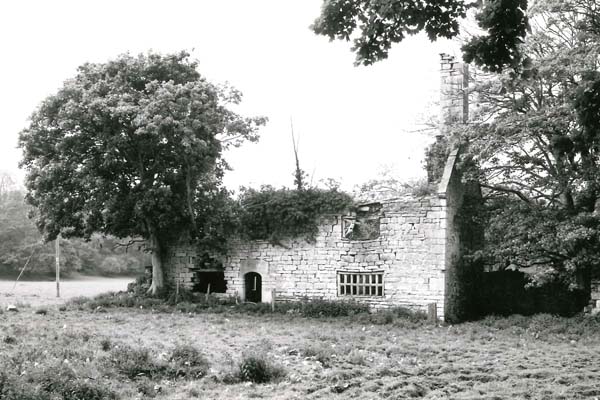
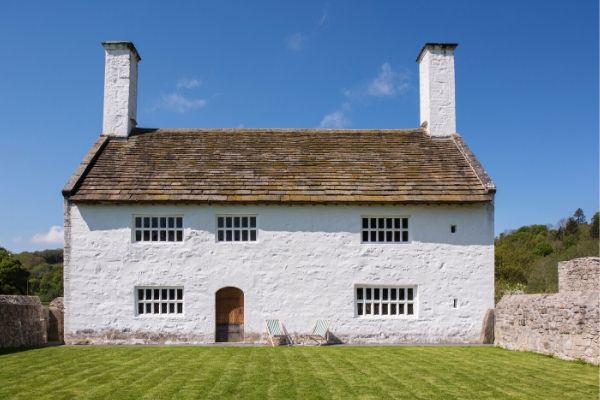
Built to house a rabbit warrener, his family and the tools of his trade, this lonely cottage stands on a ridge overlooking Kimbolton Castle. Stuck onto its face was a curious stone façade that never quite looked like it fitted – and it was indeed a later re-facing of this humble cottage to make it more of an eye-catcher in the landscape. It had lost its later rear extension, and inside it was just a graffitied void right up to the roof.
No matter how big or small, every Landmark gets the attention it needs, and at the Warren House we used both very traditional materials such as mud-based wattle & daub – but also newer materials such as the hemp and silicate board method, used to re-build the rear bathroom and kitchen extension. It was an inspired decision to put the living area on the first floor with the best views. And the hand-made, screen-printed curtains with their lolloping rabbits, will gladden any heart.
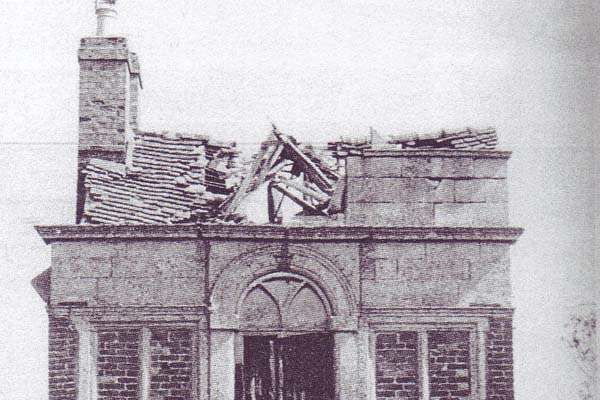
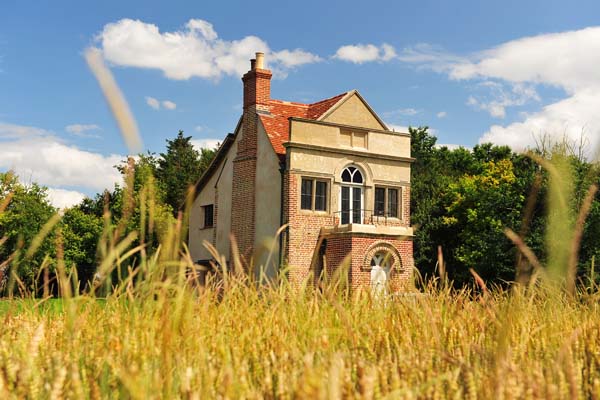
I always consider these two buildings together as, despite great differences in age and style, they are only a short distance apart and I first saw both on the same day. It was Queen Anne’s Summerhouse that I had come to visit, but the mention of a derelict head gamekeeper’s cottage nearby was too good to go unseen. And in fact, one of Landmark’s most generous donors wanted to support the restoration of Keeper’s Cottage, and so this building ended up being restored first. By great good fortune, the original architect’s drawings survived showing the all but vanished out-houses, and by rebuilding all these you get a much better feel for the gamekeeper’s domain, complete with a ‘sitting house’ for raising pheasant chicks. We even managed to restore the collapsed kennel block just below the cottage.
In due course, the Summerhouse’s turn arrived. Like the Warren House, this was just an empty shell, but with less roof surviving. Inside it was full of plants and collapsed fabric, but it is now a very upmarket ‘bedsit’ with the most cunningly designed and built kitchen in one of the four corner turrets. And the free-standing bath down in the basement is one of my favourite rooms – and has great acoustics.
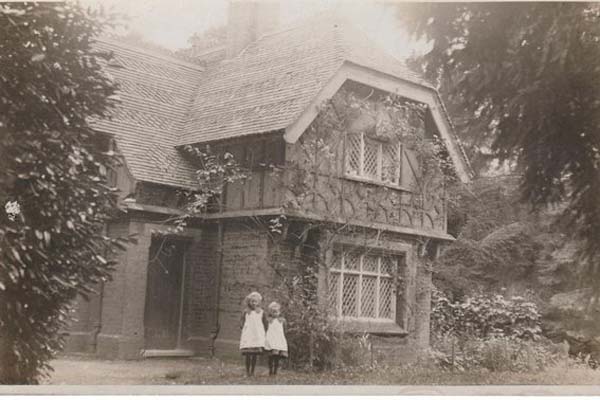
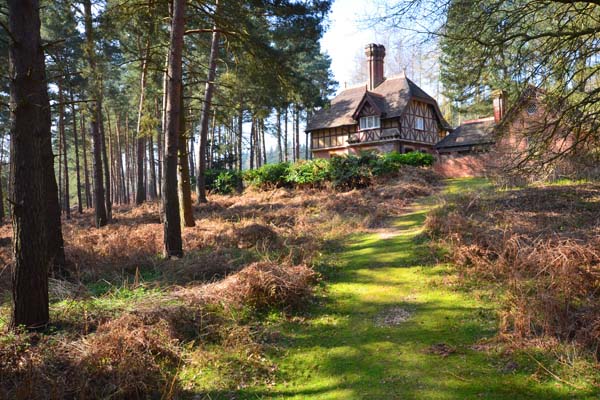
This tiny cottage always amuses me. It was built by the Countess of Galloway as a schoolhouse for as many as 25 daughters of the estate staff. She must have had a sense of humour as it is hard to imagine a more out of the way spot, standing as the Lodge does in its remote moorland setting. Those schoolgirls must have been fit walking to & from school each day as it can hardly have been convenient for any of them.
When we were first told about its plight, the only residents were barn owls, who thankfully moved into new quarters which we put in the surrounding oak trees. Not only is the Lodge bizarrely remote but it’s also full of quirky details such as a huge chimneystack with three pots – but only one flue. Historic Scotland wouldn’t allow us to build a new bathroom extension with a harled finish as we had planned, but insisted on it being built in matching stonework – which turned out to be the right call as it was beautifully done, complete with its ‘mouse’s ladders’. You would think it has always been there.
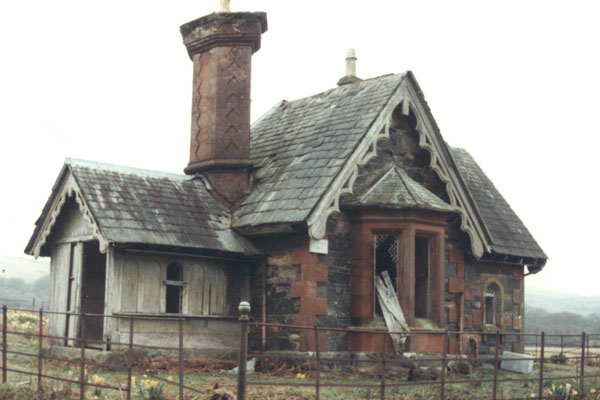
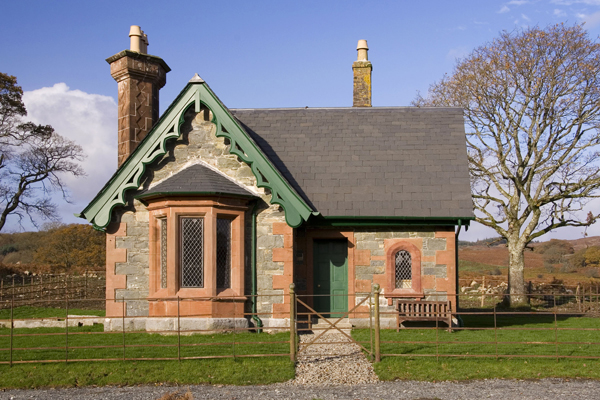
Landmark prides itself on being a charity of last resort for historic buildings that need rescuing, and Clavell Tower certainly fell into that category. The adjacent cliff edge had eroded back to within a few feet of the Tower’s walls, and time was most definitely not on its side. Clever engineers teased out possible solutions to save such a vulnerable structure, and in the end the decision was made to literally dismantle it stone by numbered stone until nothing remained of it other than a huge number of ex-Kodak packing crates in the surrounding field.
This was a challenging location exposed to some ferocious weather. I recall a mason describing how the wind had blown a heavy metal club hammer right out of his hands. We, and our long-suffering contractor, all shared some nervousness about how the Tower would be reconstructed 25 metres back from its original site. But up it went, with every stone back where it had been before – a really astonishing achievement. And with all the missing decorative details put back, Clavell Tower is rightly enjoying its reputation as one of the most romantic of Landmarks.
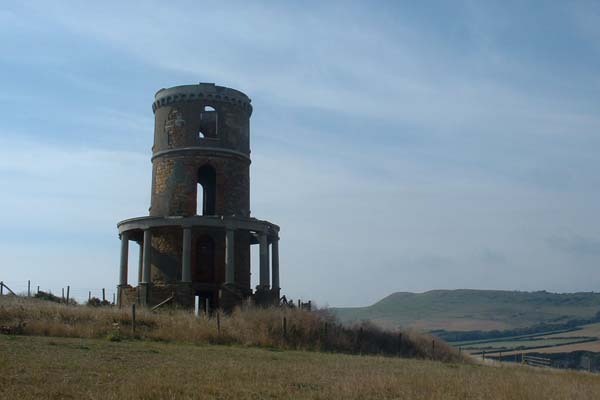
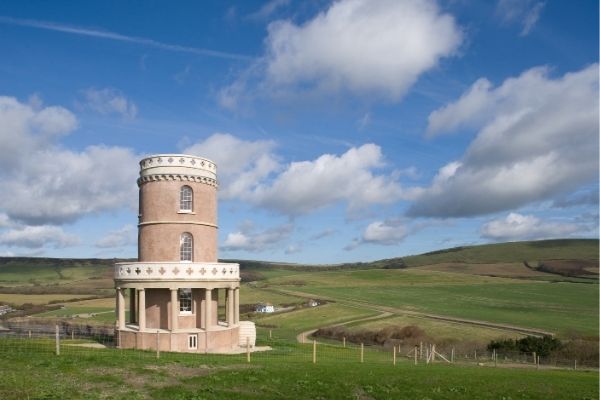
Never was a building better named! Built back in the 18th century, it had been constructed to deliberately look like a ruin when seen from the famous woodland garden down below. And by the time it came into Landmark’s care, it was considerably more ruinous, its soft sandstone walls scoured away by the swirling winds.
Sometimes it can be the more prosaic things such as services and access that take time to resolve, and it was some years before we could finally start work on the Ruin. We were lucky to find not one but two skilled stonemasonry firms who carefully pieced the walls, arches and dome back together again. The contrast between the ‘Roman’ ruin that faces the valley, and the exquisite banqueting house on the field side, makes this one of my all-time favourites.
